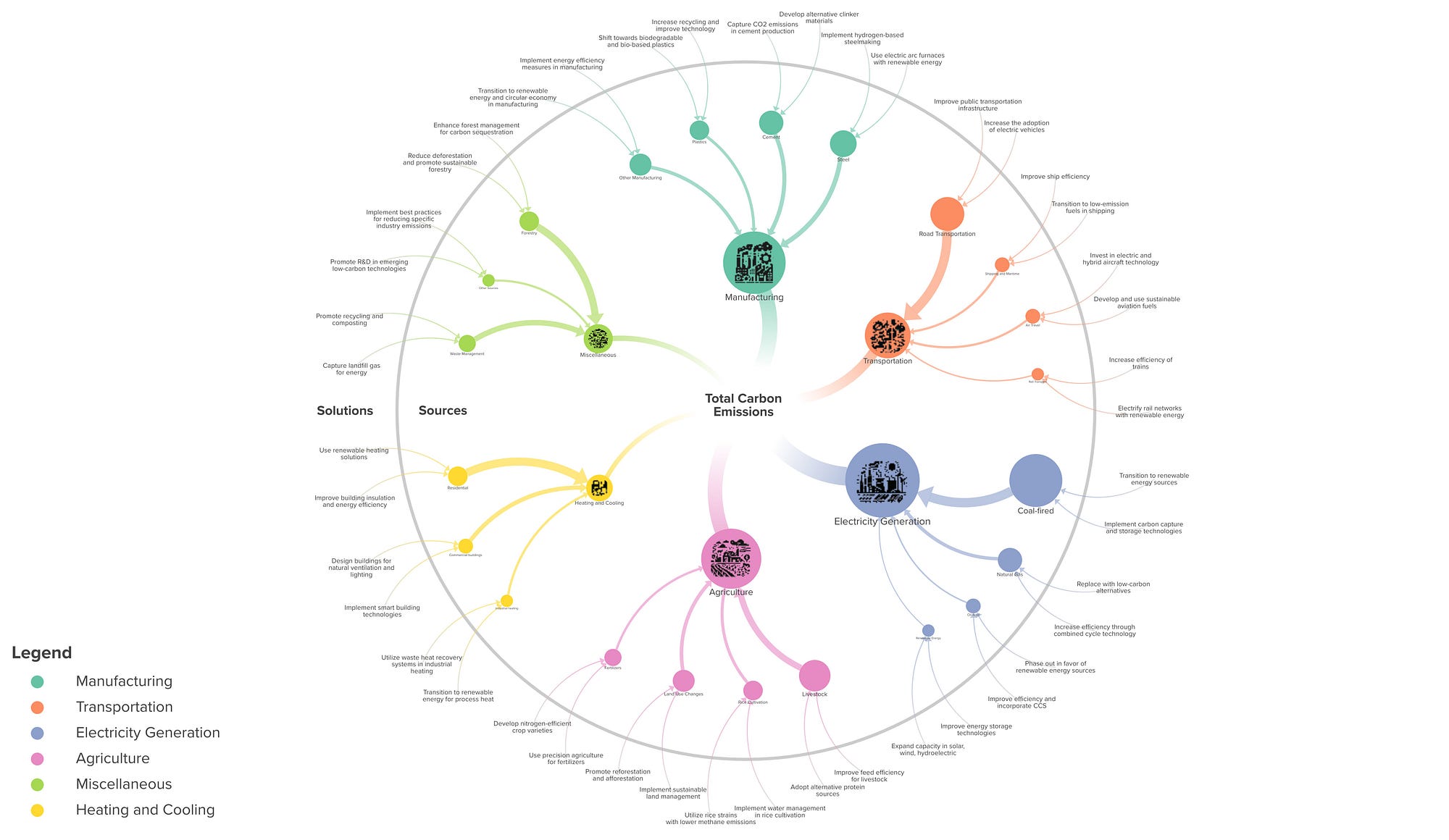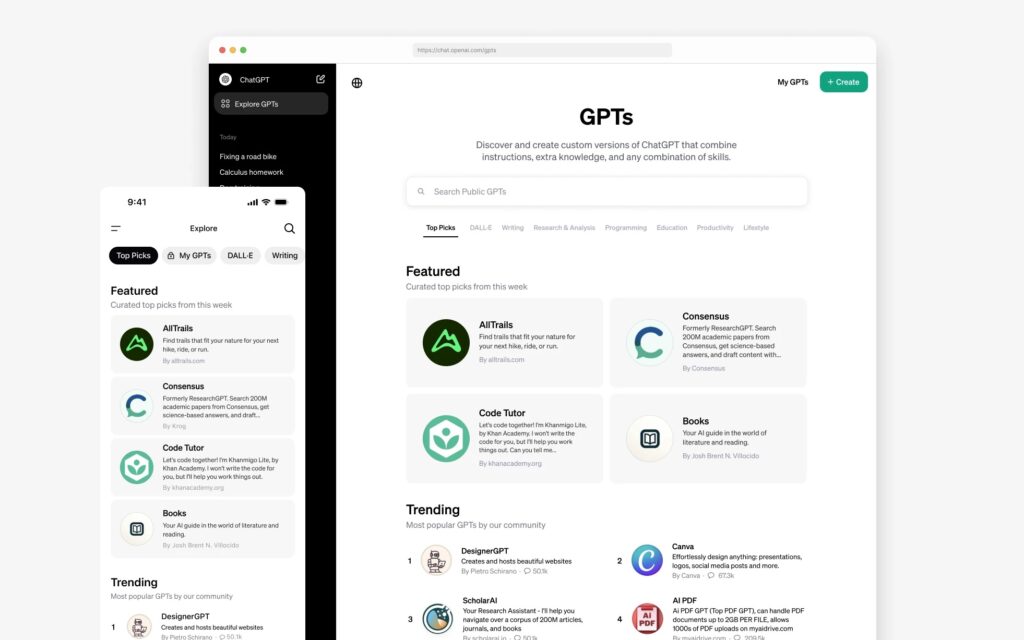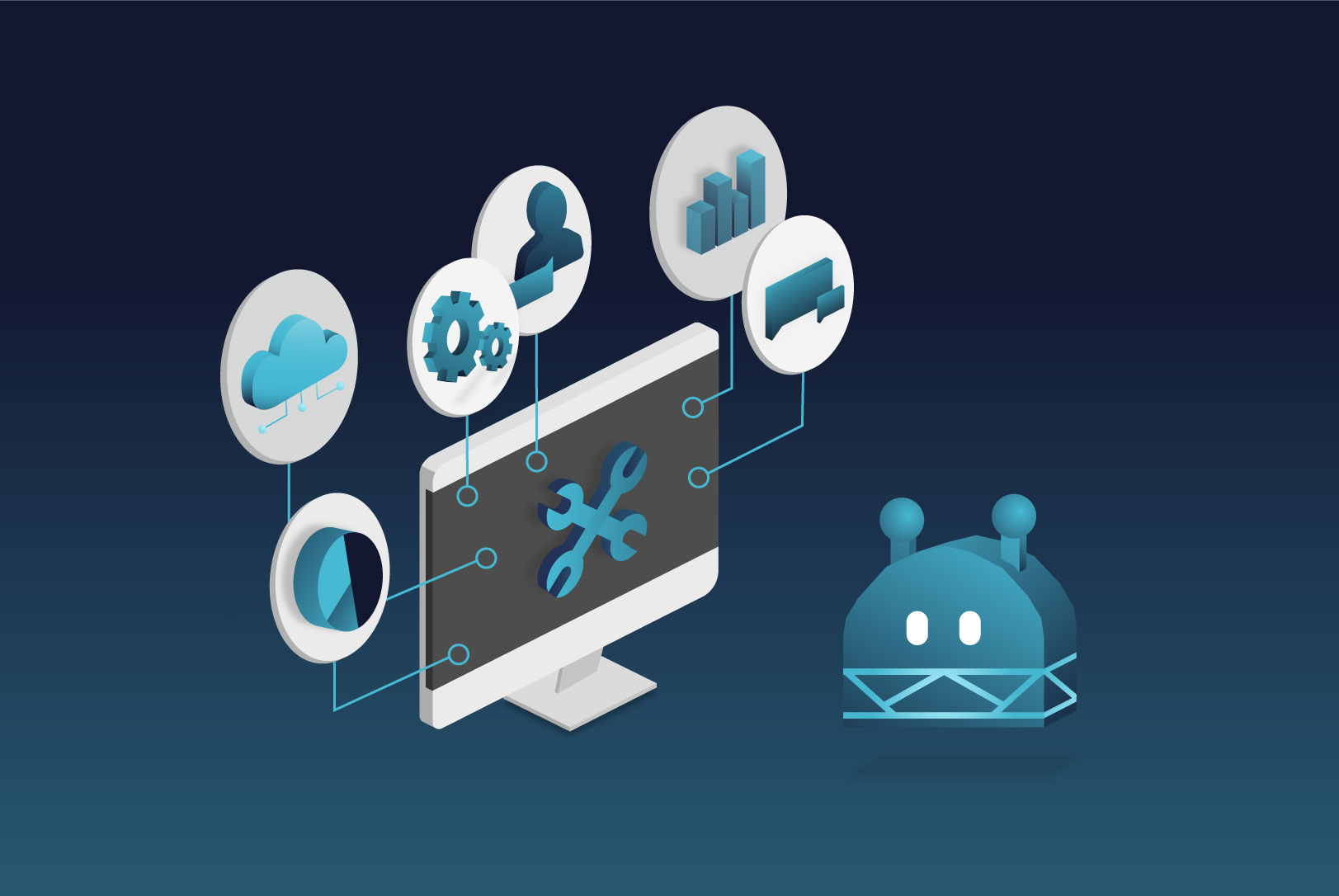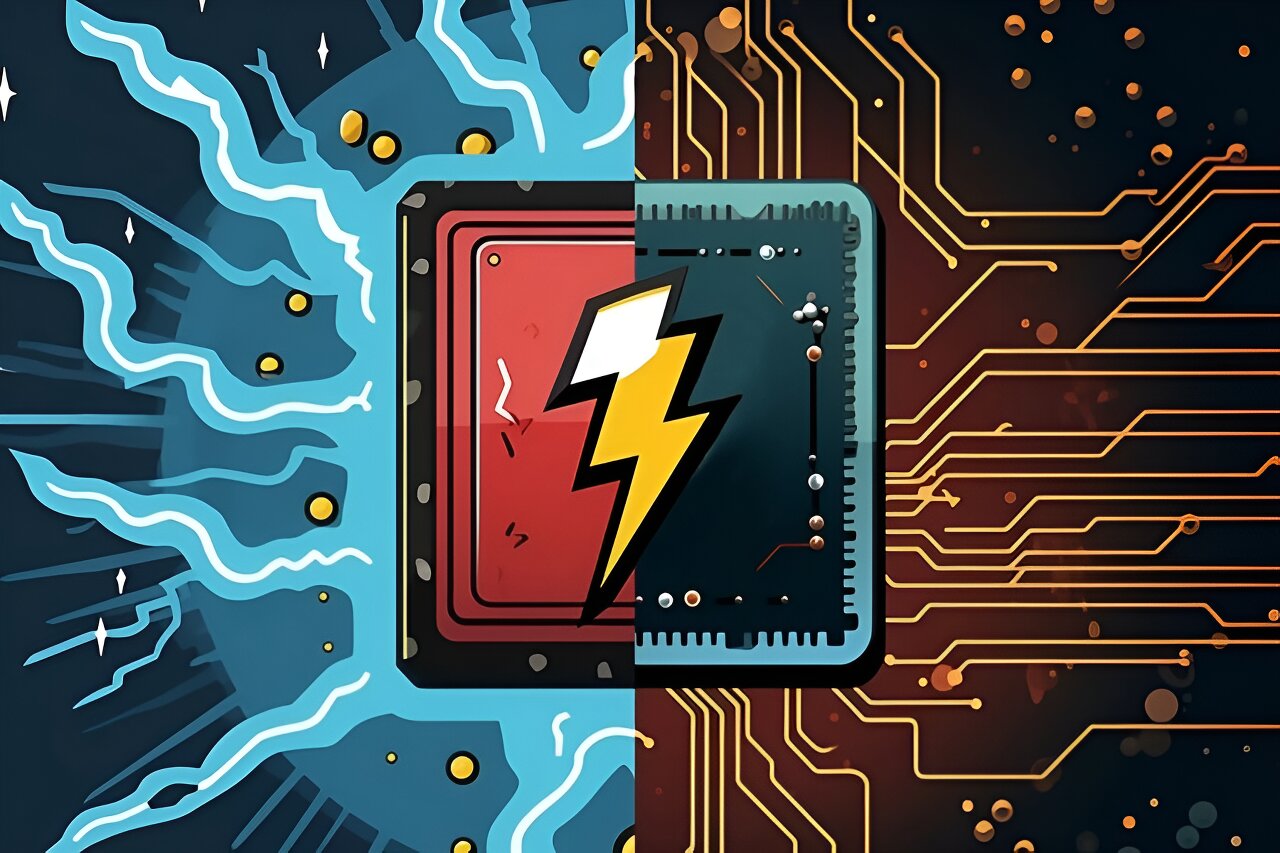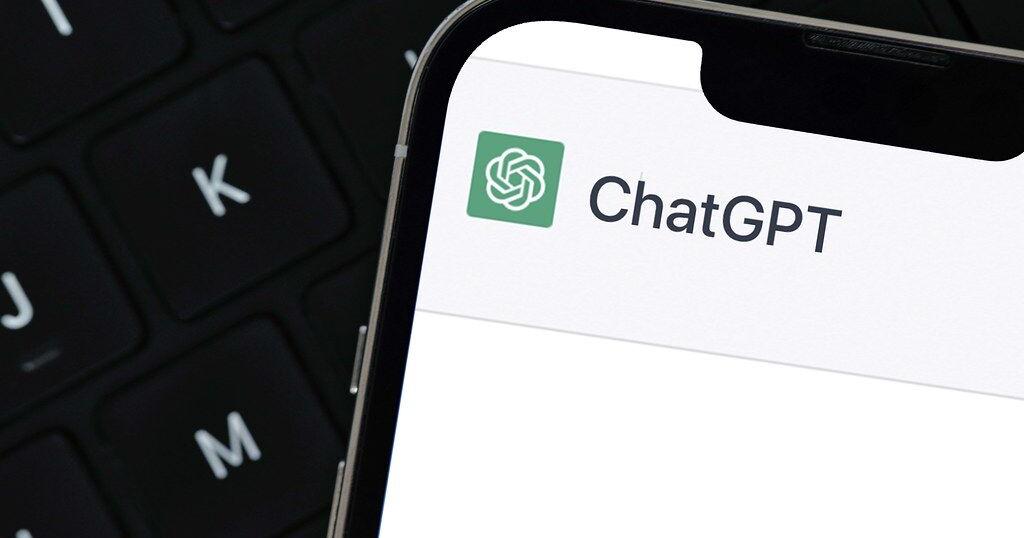
Published: Dec 3, 2024
Unleashing ChatGPT's Content Ideation Superpowers in 2025
Unleashing ChatGPT’s Content Ideation Superpowers in 2025
I’ve been playing around with ChatGPT for content ideation, and let me tell you, it’s like having a brainstorming buddy who never gets tired or asks for coffee breaks! But don’t worry, I won’t let this AI steal my thunder – I’m still the idea machine in this relationship. Let’s dive into how we can milk ChatGPT for all it’s worth in 2025!
TLDR:How can ChatGPT boost my content ideation process in 2025?
1️⃣ What types of content can ChatGPT help generate ideas for?
ChatGPT can assist with ideas for blog posts, social media content, video scripts, podcast topics, email newsletters, and even product descriptions. It’s versatile enough to handle various content formats and industries.
2️⃣ How does ChatGPT improve the efficiency of content ideation?
ChatGPT streamlines the brainstorming process by quickly generating multiple ideas based on your input. It can also help expand on initial concepts, suggest related topics, and provide different perspectives, saving you time and mental energy.
3️⃣ What are the limitations of using ChatGPT for content ideation?
While ChatGPT is a powerful tool, it lacks real-world context and personal experience. It may sometimes generate repetitive or generic ideas, so human creativity and expertise are still crucial for refining and selecting the best concepts.
Table of Contents
- Setting Up ChatGPT for Content Ideation
- Top Techniques for Content Ideation with ChatGPT
- Integrating ChatGPT with Other Tools
- Overcoming ChatGPT’s Limitations in Content Ideation
- Case Studies: Successful Content Ideation with ChatGPT
- Future of AI-Assisted Content Ideation
Setting Up ChatGPT for Content Ideation
Let’s get our AI brainstorming buddy ready to rock! Setting up ChatGPT for content ideation is like prepping your favorite coffee machine - get it right, and you’ll be buzzing with ideas in no time.
Choosing the Right ChatGPT Model
First things first, you gotta pick your flavor of ChatGPT. As of 2025, we’ve got a few options:
GPT-5 - The new kid on the block, this bad boy is like GPT-4 on steroids. It’s got a knack for understanding context that’ll make you wonder if it’s reading your mind.
GPT-4 Turbo - An oldie but a goodie, this model’s been fine-tuned to spit out ideas faster than you can say “writer’s block.”
GPT-4 Vision - Perfect if you’re into visual content. It can analyze images and give you ideas based on what it sees. Pretty neat for social media content, right?
For content ideation, I’d recommend going with GPT-5. It’s got the latest bells and whistles that’ll help you cook up some truly unique ideas.
Setting Up Your Workspace
Now, let’s talk about your digital office. Here’s how to set it up:
Create a dedicated project: In the ChatGPT interface, hit the “New Project” button and name it something catchy like “Idea Factory 3000.”
Set your parameters: Under “Project Settings,” you’ll see options for creativity level, output length, and tone. For ideation, crank that creativity slider up to 11!
Enable the “Idea Web” feature: This nifty addition to ChatGPT in 2025 visually maps out related concepts as you brainstorm. It’s like having a mind map that builds itself!
Configuring for Optimal Results
To get the most out of your AI sidekick, try these tweaks:
Use the “Industry Specialization” toggle: This new feature lets you tailor ChatGPT’s knowledge base to your specific field. Whether you’re in tech, fashion, or underwater basket weaving, it’ll give you more relevant ideas.
Enable “Trend Tracking”: ChatGPT can now tap into real-time data to keep your ideas fresh and timely. Just make sure you’re cool with it accessing current events info.
Activate “Voice Mode”: Sometimes, talking out your ideas feels more natural. With this feature, you can brainstorm with ChatGPT using your voice. It’s like having a conversation with the world’s most knowledgeable (and patient) friend.
Tips for Getting Started
Before you dive in, here are some pro tips to keep in mind:
Start broad, then narrow down: Begin with general prompts and let ChatGPT help you refine your focus.
Use the “Idea Shuffle” button: Stuck in a rut? This button randomly combines concepts for unexpected inspiration.
Save your sessions: ChatGPT now allows you to save and revisit brainstorming sessions. Name them something you’ll remember, like “Million Dollar Idea #347.”
Remember, ChatGPT is a tool, not a replacement for your creativity. Use it to spark ideas, not to do all the thinking for you. Now go forth and create content that’ll make even the AI jealous!
Top Techniques for Content Ideation with ChatGPT
Let’s dive into some killer techniques to squeeze every last drop of creativity out of ChatGPT. Trust me, by the time we’re done, you’ll be swimming in so many ideas you might need a lifeguard!
Brainstorming Sessions
First up, let’s talk about brainstorming with ChatGPT. It’s like having a think tank in your pocket, minus the fancy suits and overpriced coffee.
-
- Give ChatGPT a broad topic and ask for 20 ideas in 2 minutes. It’s like speed dating, but for content ideas!
- Example prompt: “Give me 20 blog post ideas about sustainable living in 2 minutes. Go!”
-
- Use this technique to transform existing ideas. Ask ChatGPT to Substitute, Combine, Adapt, Modify, Put to another use, Eliminate, or Reverse a concept.
- Try this: “Use the SCAMPER method to generate new ideas for a classic chocolate chip cookie recipe.”
-
- ChatGPT can help you create a digital mind map. Start with a central theme and let it branch out.
- Prompt: “Create a mind map for content ideas related to ‘work-from-home productivity hacks’.”
Topic Expansion
Now, let’s talk about beefing up those skinny ideas into juicy content feasts.
-
- Ask ChatGPT to expand on a topic using Who, What, When, Where, Why, and How.
- Example: “Expand on the topic ‘vertical gardening’ using the 5 W’s and How method.”
-
- Challenge common beliefs in your industry. Ask ChatGPT to flip popular opinions.
- Try this: “Give me 5 contrarian viewpoints on ‘social media marketing is essential for business growth’.”
-
- Use ChatGPT to explore the history and evolution of your topic.
- Prompt: “Trace the evolution of smartphone design from 1990 to 2025.”
Trend Analysis
Stay ahead of the curve by using ChatGPT to spot and analyze trends.
-
- Ask ChatGPT to predict upcoming trends in your industry based on current data.
- Example: “What are the predicted food trends for 2026 based on current culinary innovations?”
-
- Get ChatGPT to apply trends from one industry to another for fresh perspectives.
- Try: “How could trends in the gaming industry be applied to improve online education?”
-
- Use ChatGPT to explore niche trends within broader topics.
- Prompt: “Identify and explain 3 micro-trends within the larger ‘sustainable fashion’ movement.”
Audience Persona Creation
Get to know your audience like they’re your best friends (minus the 2 AM texts about their ex).
-
- Ask ChatGPT to create in-depth personas for your target audience.
- Example: “Create a detailed persona for a millennial urban professional interested in minimalist living.”
-
- Use ChatGPT to generate “day in the life” stories for your personas.
- Try: “Describe a typical day for a busy mom who’s also a part-time yoga instructor in Austin, Texas.”
-
- Get ChatGPT to dig deep into your audience’s challenges and frustrations.
- Prompt: “List and explain 7 major pain points for small business owners trying to establish an online presence.”
Remember, ChatGPT is your brainstorming buddy, not your boss. Use these techniques to spark your own creativity, then run with the ideas that get you excited. And hey, if all else fails, just ask ChatGPT to pretend it’s a caffeinated squirrel with ADHD - you’ll get some wild ideas for sure!
Integrating ChatGPT with Other Tools
Let’s face it, ChatGPT is awesome, but it’s not a one-man band. To really amp up your content ideation game, you’ve gotta mix and match tools like a DJ at a content creation rave. Here’s how to get ChatGPT playing nice with other tools in 2025:
Content Research Powerhouses
Google Trends + ChatGPT
- Use Google Trends to find hot topics, then feed them to ChatGPT for a deeper dive.
- Try this: “Based on the rising trend of ‘sustainable fashion’ in Google Trends, generate 10 unique blog post ideas that combine sustainability with current fashion trends.”
BuzzSumo + ChatGPT
- BuzzSumo shows you what’s popular, ChatGPT helps you make it your own.
- Example: “Using the top-performing article on ‘plant-based diets’ from BuzzSumo, suggest 5 unique angles to cover this topic that haven’t been explored yet.”
Visual Content Creation
Canva + ChatGPT
- ChatGPT dreams up the ideas, Canva brings them to life visually.
- Prompt: “Create a series of 5 inspirational quotes about entrepreneurship, then describe how each could be visually represented in a Canva design.”
Midjourney + ChatGPT
- Use ChatGPT to craft detailed image descriptions, then let Midjourney work its magic.
- Try this: “Generate a vivid description of a futuristic eco-friendly city for Midjourney to illustrate, including specific details about architecture and green technology.”
SEO and Keyword Research
Ahrefs + ChatGPT
- Ahrefs finds the keywords, ChatGPT helps you use them creatively.
- Example: “Using the top 5 keywords related to ‘home workouts’ from Ahrefs, create a compelling blog post outline that naturally incorporates all these terms.”
SEMrush + ChatGPT
- SEMrush identifies content gaps, ChatGPT fills them with fresh ideas.
- Prompt: “Based on the content gap analysis for ‘digital marketing’ from SEMrush, suggest 3 in-depth article ideas that could fill these gaps in our content strategy.”
Project Management and Organization
Trello + ChatGPT
- Use ChatGPT to populate your Trello boards with content ideas and tasks.
- Try this: “Create a month’s worth of social media post ideas for a fitness brand, organized into categories that could be used as Trello lists.”
Notion + ChatGPT
- ChatGPT can help structure your Notion workspace for optimal content planning.
- Example: “Design a Notion template for content ideation, including sections for brainstorming, research, drafting, and publishing. Then, populate it with initial ideas for a tech blog.”
Analytics and Performance Tracking
Google Analytics + ChatGPT
- Feed ChatGPT your analytics data for insights and future content ideas.
- Prompt: “Based on the top-performing pages from our Google Analytics report, suggest 5 follow-up article ideas that could build on this success.”
Hootsuite + ChatGPT
- Use social media performance data to inform ChatGPT’s content suggestions.
- Try this: “Analyzing our best-performing tweets from Hootsuite, generate 10 new tweet ideas that could replicate this success.”
Content Optimization
Grammarly + ChatGPT
- ChatGPT generates ideas, Grammarly polishes them to perfection.
- Example: “Write a punchy intro for a blog post about ‘remote work productivity hacks’, then suggest how Grammarly could be used to refine and enhance it.”
Hemingway Editor + ChatGPT
- Use ChatGPT for initial drafts, then run them through Hemingway for clarity.
- Prompt: “Create a paragraph explaining ‘blockchain technology to beginners’, then describe how the Hemingway Editor could improve its readability.”
Remember, integrating these tools is like cooking up a content storm. ChatGPT is your sous chef, chopping up ideas and prepping the ingredients. The other tools? They’re your spices, pots, and pans, helping you turn those raw ideas into a five-star content feast. Now get out there and start cooking up some mind-blowing content!
Overcoming ChatGPT’s Limitations in Content Ideation
Let’s face it, ChatGPT is pretty awesome, but it’s not perfect. It’s like that friend who knows a little bit about everything but sometimes gets the details mixed up. So, how do we work around its quirks and limitations? Let’s dive in!
Recognizing ChatGPT’s Blind Spots
-
- ChatGPT’s knowledge has a cutoff date. It’s like your uncle who still thinks MySpace is the hottest social network.
- To combat this, use ChatGPT for evergreen ideas, then cross-reference with current events.
-
- AI can perpetuate societal biases. It’s not trying to be rude; it’s just repeating what it’s learned.
- Always review and challenge ChatGPT’s suggestions for potential biases.
-
- ChatGPT hasn’t lived a day in its life. It can’t tell you how it felt to ride a roller coaster or taste a perfect taco.
- Use ChatGPT for structure and facts, but inject your own experiences for authenticity.
Strategies for Enhancing ChatGPT’s Output
The “What If” Game
- Push ChatGPT’s creativity by asking “What if” questions.
- Try: “What if smartphones could teleport? Give me 5 article ideas exploring this concept.”
-
- Don’t take ChatGPT’s word as gospel. It’s more like a starting point for your research.
- Example: After getting ideas from ChatGPT, say “Now, let’s fact-check these points using reputable sources.”
-
- ChatGPT excels at connecting dots. Use this to your advantage!
- Prompt: “Give me content ideas that combine cryptocurrency and sustainable fashion.”
Injecting Human Creativity
The Personal Touch
- Add your unique voice and experiences to ChatGPT’s suggestions.
- After getting an outline from ChatGPT, ask yourself, “What personal story can I add to make this more relatable?”
-
- ChatGPT struggles with emotional nuance. That’s where you come in!
- Try: “How can I make this content about financial planning more emotionally engaging for readers?”
-
- AI might miss cultural subtleties. Always consider your audience’s cultural background.
- Ask yourself: “How would this content be perceived in different parts of the world?”
Leveraging ChatGPT’s Strengths
-
- ChatGPT is great at creating frameworks. Use it to build the skeleton of your content.
- Prompt: “Create a detailed outline for a blog post about sustainable travel in 2025.”
-
- AI excels at drawing parallels. Use this for creative explanations.
- Try: “Give me 5 analogies to explain blockchain technology to a 10-year-old.”
Different Perspectives Generator

- Use ChatGPT to explore various viewpoints on a topic.
- Example: “Provide 3 different perspectives on the impact of remote work on urban development.”
Ethical Considerations
-
- Be open about using AI in your content creation process. Your audience will appreciate the honesty.
- Consider adding a note like: “This content was developed with the assistance of AI tools, with human oversight and editing.”
-
- Don’t let ChatGPT do all the heavy lifting. Your unique insights are invaluable!
- Regularly ask yourself: “What can I add to this that ChatGPT can’t?”
Respecting Intellectual Property
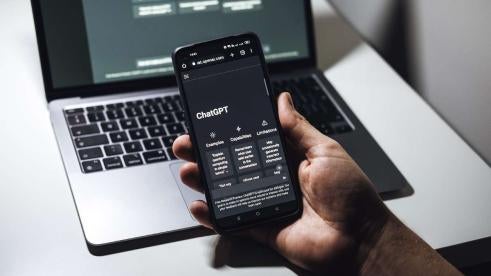
- ChatGPT might inadvertently reproduce copyrighted content. Always double-check and rewrite in your own words.
- Use tools like Copyscape to ensure your final content is original.
Remember, ChatGPT is a tool, not a replacement for human creativity. It’s like having a super-smart intern who sometimes needs a reality check. Use it to spark ideas, challenge your thinking, and streamline your process, but always add that human touch. After all, your readers want to connect with you, not an AI!
Now go forth and create content that’s so good, even ChatGPT will be impressed!
Case Studies: Successful Content Ideation with ChatGPT
Let’s dive into some real-world examples of how folks are using ChatGPT to supercharge their content ideation process. These case studies will show you that with a little creativity and the right approach, ChatGPT can be your secret weapon for generating killer content ideas.
Case Study 1: The Travel Blog Revolution
Wanderlust Weekly
- A mid-sized travel blog struggling to come up with fresh content
Sarah, the founder of Wanderlust Weekly, was hitting a wall with her content ideas. Her blog traffic was plateauing, and she needed a spark to reignite her creativity. Enter ChatGPT.
The Strategy:
Trend Mashing: Sarah asked ChatGPT to combine current travel trends with unexpected topics.
- Prompt: “Give me 10 unique travel article ideas that combine eco-tourism with technology trends.”
Persona-Based Ideation: She created fictional traveler personas and used ChatGPT to brainstorm content for each.
- Example: “Generate 5 article ideas for a budget-conscious, tech-savvy millennial exploring Southeast Asia.”
Challenge Conventional Wisdom: Sarah prompted ChatGPT to come up with contrarian views on popular travel advice.
- Prompt: “Provide 3 unconventional perspectives on the ‘must-see’ tourist attractions in Paris.”
The Results:
- 50% increase in blog traffic within 3 months
- 30% boost in social media engagement
- Featured in National Geographic Traveler for a unique article on “Tech-Free Zones in Hyper-Connected Cities”
Case Study 2: The Fitness Influencer’s Comeback
FitWithJake
Jake, a fitness influencer with 500K followers, was running out of ideas for his daily workout posts. His engagement was dropping, and he feared losing his hard-earned audience.
The Strategy:
Cross-Industry Inspiration: Jake asked ChatGPT to apply concepts from other industries to fitness.
- Prompt: “How can principles from architecture be applied to create unique bodyweight workouts?”
Historical Fitness Trends: He used ChatGPT to research and reimagine old-school fitness methods.
- Example: “Give me 5 ways to modernize isometric exercises from the 1960s for a Gen Z audience.”
AI-Assisted Challenge Creation: Jake used ChatGPT to generate ideas for viral fitness challenges.
- Prompt: “Create 3 fitness challenge ideas that incorporate household items and can be completed in under 5 minutes.”
The Results:
- 70% increase in video views across platforms
- Collaboration offers from major fitness brands like Nike and Lululemon
- Featured in Men’s Health for his innovative “Architect’s Core Workout” series
Case Study 3: The Local News Resurgence
Metro Minute
- A struggling local news website in Denver, Colorado
The team at Metro Minute was fighting to stay relevant in the age of national news dominance. They needed a way to make local stories more engaging and shareable.
The Strategy:
Hyperlocal Deep Dives: They used ChatGPT to generate ideas for in-depth local stories.
- Prompt: “List 10 unique angles to cover the impact of urban development on Denver’s Five Points neighborhood.”
Local History Meets Modern Issues: The team asked ChatGPT to connect historical events with current local challenges.
- Example: “How can the history of the Colorado Gold Rush provide insights into Denver’s current housing crisis? Give me 5 article ideas.”
Community Hero Spotlight: They used ChatGPT to brainstorm creative ways to feature local unsung heroes.
- Prompt: “Generate 7 unique content ideas to showcase local teachers making a difference in Denver’s underserved communities.”
The Results:
- 100% increase in website traffic within 6 months
- 45% growth in newsletter subscriptions
- Won a local journalism award for their series “Five Points: Past Echoes, Future Visions”
Key Takeaways from These Case Studies
Combine Unlikely Elements: Don’t be afraid to ask ChatGPT to mash up different topics or industries. This often leads to the most innovative ideas.
Leverage Historical Context: Use ChatGPT’s knowledge base to draw inspiration from the past and apply it to modern contexts.
Challenge Assumptions: Prompt ChatGPT to question conventional wisdom in your field. This can lead to thought-provoking content that stands out.
Get Specific: The more detailed your prompts, the more unique and useful ChatGPT’s responses will be.
Iterate and Refine: Don’t stop at the first set of ideas. Use ChatGPT’s output as a springboard for further brainstorming and refinement.
Remember, ChatGPT is a powerful tool, but it’s your creativity and understanding of your audience that will truly make your content shine. Use these case studies as inspiration, but don’t be afraid to forge your own path in the world of AI-assisted content ideation. Now go out there and create something awesome!
Future of AI-Assisted Content Ideation
The world of content creation is evolving faster than a chameleon on a disco dance floor, and AI is leading the charge. Let’s peek into the crystal ball and see what’s cooking for AI-assisted content ideation beyond 2025.
Hyper-Personalized Idea Generation
Imagine an AI that knows you better than your best friend. Creepy? Maybe. Useful? Absolutely.
Biometric Feedback Integration

- Future AIs might tap into your smartwatch data to suggest ideas based on your mood and energy levels.
- Picture this: “You seem stressed today. How about 5 article ideas on quick meditation techniques for busy professionals?”
Neuralink-Style Thought Capturing
- We’re not quite there yet, but direct brain-to-AI interfaces could revolutionize ideation.
- Imagine thinking, “I need a catchy headline,” and boom - your AI assistant serves up 10 options instantly.
Predictive Trend Analysis
AIs are getting scary good at predicting the future. Here’s how that might shape content ideation:
Quantum Computing Enhanced Trend Forecasting
- AIs leveraging quantum computing could analyze vast amounts of data to predict micro-trends before they even start.
- Try asking: “What will be the next big thing in sustainable fashion six months from now?”
Cross-Cultural Trend Synthesis

- Future AIs could blend trends from different cultures to create unique content angles.
- Example prompt: “Combine rising trends from K-pop culture and Brazilian street art for fresh social media content ideas.”
Multi-Modal Content Ideation
Text is so 2023. The future is all about mixing it up:
Augmented Reality (AR) Concept Visualization
- Imagine describing an idea to your AI, and it generates an AR mockup in real-time.
- “Show me an AR visualization of a futuristic eco-friendly kitchen for my home improvement blog.”
Sensory-Rich Idea Generation
- Future AIs might suggest content ideas that appeal to multiple senses.
- “Generate a list of ‘taste-able’ Instagram post ideas for a gourmet food blogger.”
Ethical and Sustainable Content Ideation
As we become more aware of our digital footprint, AI will adapt:
Carbon Footprint Conscious Ideation
- AIs might suggest content ideas that are not only engaging but also have a low environmental impact.
- “Propose 5 video content ideas that can be produced with minimal carbon footprint.”
Diversity and Inclusion Check
- Future AIs will be much better at ensuring your content ideas are inclusive and representative.
- “Generate blog post ideas about workplace culture that resonate with a diverse, global audience.”
Collaborative AI Ecosystems
Why have one AI when you can have a whole team?
AI Idea Battlegrounds
- Multiple AI models could compete to generate the best content ideas, with humans as the final judge.
- “Host an AI battle royale for the most innovative podcast topic on urban gardening.”
Swarm Intelligence for Idea Refinement
- Imagine a swarm of specialized AI agents working together to refine and expand on initial ideas.
- “Use swarm AI to evolve this basic idea: ‘Dogs in space’ into a full-fledged children’s book concept.”
Human-AI Co-Creation Platforms
The future isn’t about AI replacing humans; it’s about harmonious collaboration:
Real-Time Collaborative Editing
- Picture a platform where you and an AI can riff off each other’s ideas in real-time.
- “Start a collaborative story with an AI, alternating sentences to create a unique sci-fi plot.”
Emotion-Driven Idea Enhancement
- AIs might read your emotional response to ideas and adjust in real-time.
- “As I review these blog post ideas, analyze my facial expressions to refine suggestions.”
The Wild Cards
Because the future is nothing if not unpredictable:
-
- AIs might tap into our subconscious by analyzing our dreams for content ideas.
- “Extract potential story ideas from last night’s dream about flying pizzas.”
Multiverse Idea Exploration
- Why stop at one reality? AIs could generate ideas based on hypothetical alternative universes.
- “Give me content ideas for a world where the internet was never invented.”
Remember, while these futuristic concepts are exciting, the core of great content will always be human creativity and authenticity. AI is a tool, not a replacement for your unique voice and perspective.
As we rocket towards this AI-assisted future, keep one foot grounded in what makes your content uniquely yours. After all, in a world of AI-generated ideas, your human touch will be more valuable than ever. Now, go forth and create content that’ll make even our future robot overlords do a double-take!



